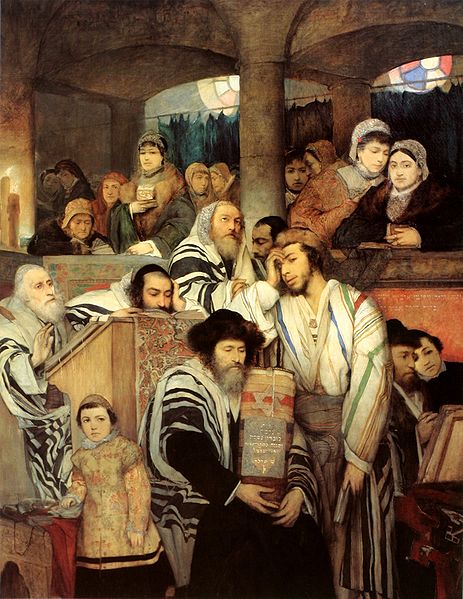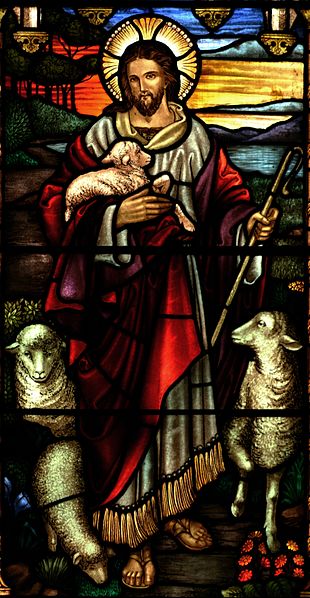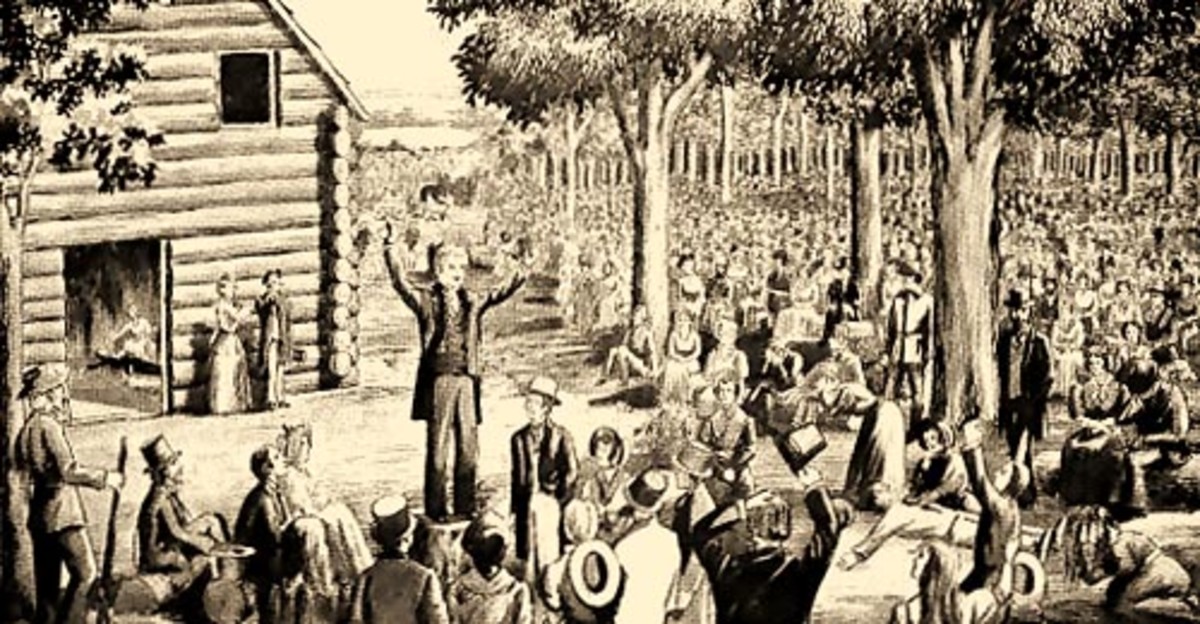Sadducees, Pharisees and the Impact of Pharisaic Thought on Christianity

Thesis
To a reader of the New Testament lacking a background in Jewish theology, the Pharisees and Sadducees seem merely to be two sides of the same coin; restrictive religious sects opposed to Jesus and his messianic claims. In fact, the ideological differences between the two parties and the prevalence of Pharisaic thought among the vast majority of Jews, including Paul the Apostle, held a great deal of significance for nascent Christianity. Christianity is more than the logical continuation of Pharisaic theology, but the emergence and wide acceptance of Pharisaism was necessary for even the most basic tenets of Christianity to take root among Jewish believers. If not for the theological progress made by the Pharisaic sect, there might not be any Christianity at all and certainly no Apostle Paul.

What's the Difference Between Pharisees and Sadducees?
The Pharisees emerged out of a growing conviction among the “Israelites,” or Jewish laity, that non-priestly men of learning could and should participate in teaching and interpreting the Torah (Lauterbach, 85-87). Previously, it had been understood that the priesthood should be the keepers and teachers of the Torah, “…for the law shall not perish from the priest,…” and “They shall teach Jacob thy judgments, and Israel thy law: they shall put incense before thee, and whole burnt sacrifice upon thine altar” (Jer. 18:18; Deut. 33:10 [KJV]). At least since the time of Ezra, when the law was read and all the people swore to obey it, “the priests, especially the priest-scribes, the successors of Ezra, were the keepers of the Book of the Law, the official teachers and interpreters of the Torah” (Lauterbach, 81). During the exilic period, the Jews had been forced to practice religion apart from the Temple and to recognize that God was everywhere and there was more to pleasing him than the rituals and sacrifices performed at the Temple (Lauterbach, 80-81). This was a message preached by the prophets for many years, but it took the Babylonian exile for the people to truly receive it (Lauterbach, 80-81). After the Jews returned to Judea and rebuilt the Temple, “the priests were also restored to their former position as religious leaders. The priestly conceptions, then, regained their influence and overshadowed the prophetic ideas” (Lauterbach, 81).
Gradually, things changed and lay teachers of the law joined their priestly brethren in a ruling council, the Sanhedrin, early in the second century B.C.E. (Lauterbach, 87). For about two decades, the priestly group and “Israelitish” students of the Torah worked together to find solutions to the new problems that arose, for which pre-existing interpretations of the law were inadequate (Lauterbach, 87-88). During this period, the ideological differences between the priestly and non-priestly groups became more obvious and problematic (Lauterbach, 88-90). Intensified attempts at Hellenization and religious persecution from Antiochus Epiphanes sparked the Maccabean revolt, uniting pious Jews against Syria and more Hellenistic Jews (Gundry, 8-9). In the period of independence that followed, political and religious and military leadership were returned to the priesthood in the form of the Hasmonean dynasty (Gundry, 9-10).
The Sadducees of Jesus’ day “were heirs of the intertestamental Hasmoneans” while the Pharisees came from the laity and the Hasideans who resented Hellenization and wanted to keep Jewish culture pure (Gundry, 63, 65). By that time, the two groups had “recognized that their differences were fundamental and irreconcilable” (Lauterbach, 90). The noted Talmud scholar Louis Finkelstein, in summarizing Wellhausen’s views on the differences between the two sects, describes the Sadducees as a political party with strong nationalistic leanings and the Pharisees as a purely religious sect with no interest in politics at all (Finkelstein, 186). Later in the same article, titled “The Pharisees: Their Origin and Their Philosophy” Finkelstein points out that reducing the antagonism between Sadducees and Pharisees to political motivations does not account for “the well-known theological and legal differences between the two” (Finkelstein, 186).
As noted by the authors of the synoptic gospels, the Sadducees did not believe in resurrection (Matt. 22:23; Mar. 12:18; Lk. 20:27). It must be remembered that the Sadducees were, first and foremost, adherents of the priestly tradition and had very definite theological views on nearly everything, including “the resurrection, the oral law, freedom of the will, and the existence of angels” (Finkelstein, 186). The main difference between the Pharisees and Sadducees, however, centered on their disparate methods of defining and interpreting the Torah (Lauterbach, 79). The Sadducees interpreted the Torah literally, asserting that the people were bound to keep the letter of the law because they had vowed to do so in Ezra’s day and to transgress the law would invoke a curse (Lauterbach, 95; Neh. 10:1, 29-30). In this view, a person was bound to obey the exact commands written in the first five books of the Bible, “But more than the document called for, more than the letter of the law explicitly required, he was not bound to do” (Lauterbach, 96). Thus, while the Sadducees did not reject traditional laws and customs, only the Torah had absolute authority (Lauterbach, 96-97).
The Pharisees saw the Torah as authoritative because it was the revealed Law of God rather than because of an oath taken in the days of Ezra (Lauterbach, 99). This is where Pharisaical thought begins to look like the precursor to Christian theology. For the Pharisee, the Law was not a series of requirements to earn God’s favor or stave off divine wrath. Rather, it was proof of God’s love; that He gave to man a “guide for life, to lead him in the right path and help him live a good life, a godlike life, and thus come nearer to God” (Lauterbach, 99). In Pharisaic tradition can also be seen an inkling of the universalism preached by the Apostle Paul, “For, the Torah was not intended for Israel alone, or for Palestine alone, or for a certain period of time and for certain conditions only,” but it was meant to be shared with all nations (Lauterbach, 100). The Pharisees also believed that reason and conscience were gifts of God and meant to be used when interpreting the Torah (Lauterbach, 100). A potent example of this can be seen in the difference between the Sadducees’ and Pharisees’ understandings of “eye for eye, tooth for tooth, hand for hand…” (Exd. 21:24 KJV); where the Sadducees took this and other verses literally, exacting “physical punishment for the one who damaged his fellow’s body… the Pharisees…deduced that these verses allude to monetary compensation equal to the physical damage” (Regev, 134). In cases requiring the death penalty, the Pharisees also made interpretive judgment calls, allowing for more merciful methods of execution than the Sadducees’ literal reading could countenance (Regev, 134).

The Debt Christianity Owes to the Pharisees
By the time of Jesus’ ministry, the Pharisees were gaining popularity over the more aristocratic Sadducees and were, according to Professor Jacob Z. Lauterbach, the religious party followed by “plain and humble people” (Lauterbach, 71). Though Jesus clearly did not identify with either party and roundly criticized them both on multiple occasions, his teachings much more closely aligned with those of the Pharisees than the Sadducees (Lauterbach, 71). Jesus repeatedly departed from a literal interpretation of the Law, going beyond its requirements.
“You have heard that it was said to the people long ago, 'Do not murder, and anyone who murders will be subject to judgment.' But I tell you that anyone who is angry with his brother will be subject to judgment” and “You have heard that it was said, 'Do not commit adultery.' But I tell you that anyone who looks at a woman lustfully has already committed adultery with her in his heart” (Matt. 5:21-22, 27-28 NIV).
Though Jesus’ teachings surpassed those of the Pharisees, they had set the precedent for interpretations of Scripture according to the “‘traditions of the elders’” rather than the strictly literal reading by the Sadducees (Lührmann, 77). In the matter of resurrection, too, Jesus differed from the Pharisaic doctrine, which looked forward to a bodily resurrection of the righteous and the establishment of God’s kingdom on earth (Wright, 2-3). Jesus’ individual resurrection certainly did not fit in with Pharisaic Eschatology (Wright, 3), but the Pharisees and their forerunners were to thank for the widespread acceptance of resurrection among the Jews, since the Sadducees, as has already been noted, did not believe in it. Thus, the absence of Pharisaic thought in Judaism would have made Jesus’ teachings and his bodily resurrection nearly impossible for Jews to accept.
Later Christian theology also owes much to the Pharisees, for the Apostle Paul was “a Pharisee, the son of a Pharisee” who actually used the debate over resurrection to his advantage when standing before the Sanhedrin (Acts 23:6). His Pharisaic background also made Paul more likely to accept non-Jews into the fold of Christianity, since Pharisaic tradition welcomes new converts, provided they adhere to certain rites of Judaism, including circumcision (Lauterbach, 70-71). In his theology of justification by grace, Paul rejected even that outward show of Judaism for gentile converts to Christianity, claiming that “For in Christ Jesus neither circumcision nor uncircumcision has any value. The only thing that counts is faith expressing itself through love” (Gal. 5:6), but it was his combined Pharisaic and Hellenistic background that allowed Paul to a) believe in Christ’s bodily resurrection and the eventual resurrection of all believers, and b) accept gentiles as equal inheritors in God’s promises.
Christianity is not merely the “daughter religion” of Judaism (Lauterbach, 70), but the Pharisees contributed an anticipation of resurrection and reward for the righteous and a concept of religion based on love rather than fear, to the Judaic foundation upon which Christ built (Lauterbach, 69-70). The concept of God as a loving father has always been present in Judaism, as evidenced by many of the prophetic writings and the Psalms, but a strict adherence to the Law as a document threatened to leach the meaning out of human-divine relations. Though Pharisaic tradition was on its way down the same path by the time of Christ, the lay teachers of the Law had helped to pave the way for acceptance of Jesus as the risen Lord, even if the Pharisees themselves never acknowledged him as the Messiah. Without that intermediary theological step between the priestly Sadducees and Christianity, Jesus would have found a cooler reception in Israel and the Apostle Paul, who owed much of his zeal and theological genius to his Pharisaic training, might never have been there to welcome gentiles into the church as more than second-class citizens.

References
Blue Letter Bible. " Acts of the Apostles 23, Book of Deuteronomy 33, Book of Exodus 21, Gospel of Matthew 5, The Major Prophet Jeremiah 18, Paul's Epistle - Galatians 5 (KJV - King James Version)." Blue Letter Bible. 1996-2012.
Finkelstein, L. (1929). The pharisees: their origin and their philosophy. Harvard Theological Review, 22(3), 185-261.
Gundry, R. H. (2003). A survey of the NewTestament. (4th ed., p. 9,10,63,65). Grand Rapids, MI: Zondervan.
Lauterbach, J. Z. (1929, June). The pharisees and their teachings. Hebrew Union College Annual, pp. 69-139.
Lührmann, D. (1989). Paul and the Pharisaic tradition. Journal For The Study Of The New Testament, (36), 75-94.
Regev, E. (2006, September). The sadducees, the pharisees, and the sacred: meaning and ideology in the halakhic controversies between the sadducees and pharisees. Review of rabbinic judaism, 126-140.
Wright, N. T. (n.d.) "The transforming reality of the bodily resurrection." 1-10.



